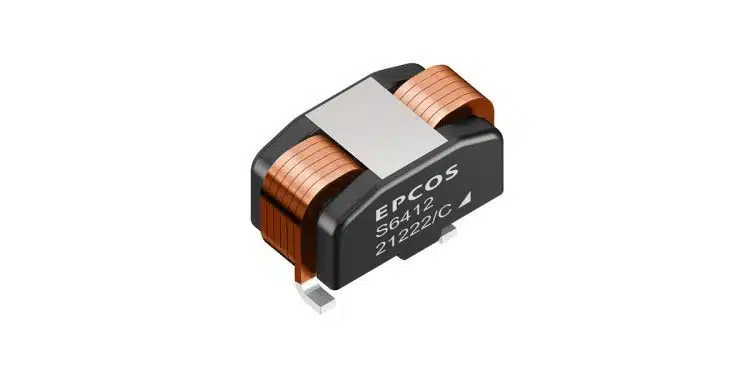TDK Corporation has expanded its family of flat wire power inductors with the high-performance EPCOS ERUC23 coupled inductor series (B82559S*).
In such components, two windings share a single magnetic core. The new series comprises six types covering a coupled inductance range from 1.4 µH to 4.1 µH and saturation currents from 50 A to 97 A.
The AEC-Q200-qualified and RoHS-compliant components, which can be picked and placed automatically, have dimensions of just 26.8 x 13.8 mm2, with heights varying between 13.7 mm and 14.0 mm depending on the type. They are specified for a wide temperature range from -40 °C to +150°C, and depending on the type, the DC resistance of a single winding is 0.82 mΩ to 1.85 mΩ.
Coupled inductors are very versatile: They are suitable for dual-phase buck and boost converters as well as for buck/boost converters – particularly also for hybrid voltage converters that convert 48 V to 12 V. Since the two windings are coupled, the ripple current is reduced which improves efficiency. Using coupled inductors instead of two individual chokes saves significant space on the circuit board.
Features
- High saturation currents
- Low DC resistance
- Automatic pick and place, surface mounting
- Reduced ripple with improved efficiency in a compact package
Applications
- Dual-phase buck and boost converters as well as buck/boost converters
- Hybrid converter for 48 V to 12 V (flying capacitor converters)































